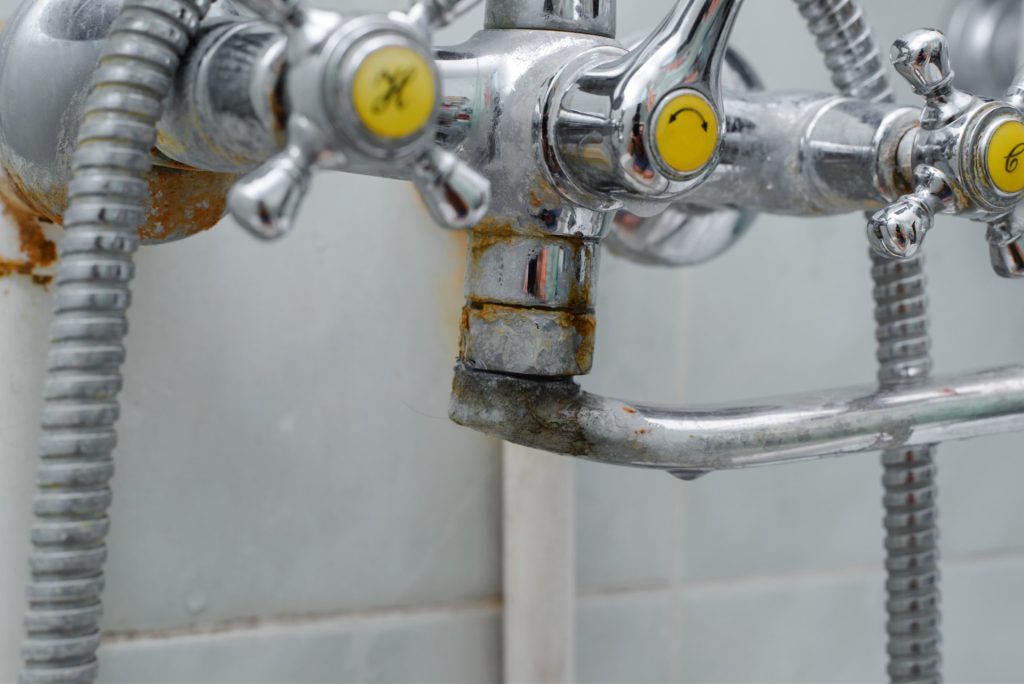Discovering plumbing leaks early can save you hundreds of dollars on your water bills and prevent you from incurring even more costly repairs for water damage resulting from faulty plumbing. That's why it's also essential to know when to leave complex plumbing repairs to the professionals at Clements Plumbing Heating & Air, while you can detect many common leaks using simple DIY methods right in your own home.
Start With Your Water Meter
Your water meter is your first line of defense against hidden plumbing leaks. First, turn off the main water supply to your home. Then, watch your water meter for the next 10 to 15 minutes. If the dial moves or numbers change when no water is running, you have a leak somewhere in your system.
For a more precise water meter leak check, follow these steps:
- Write down the exact reading after you've shut off your home's water main and record the time you took the reading.
- Wait one hour without using any water, and then recheck the water meter.
- Record the reading on your water meter. If there is a change, that indicates a clear sign of water loss, which requires further investigation by a professional plumber.
Test Your Toilets With Food Coloring
One of the most effective and simple DIY methods is the food coloring test for your toilets. This test is so straightforward that anyone can do it.
Remove the toilet tank lid on the back, add 10 or 20 drops of food coloring to the tank water, and wait 15 to 20 minutes without flushing. If you see colored water in the bowl, it's a clear sign that your flapper valve isn't sealing properly, allowing water to leak continuously from the tank to the bowl.
Inspect Visible Plumbing Fixtures
Walk through your home and carefully examine all visible plumbing fixtures. Look for:
- Dripping faucets or showerheads
- Water is pooling around pipe joints
- Corrosion or mineral deposits on pipes
- Damp spots on walls or ceilings
- Musty odors that might indicate moisture buildup
Pay special attention to areas under sinks, around water heaters, and near washing machine connections where leaks commonly develop.
Check for Underground Leaks
If your water meter test revealed a leak but you can't find it inside, you may have an underground leak. Shut off your home's main water valve, typically located near the street or where the main line enters your house.
With the valve closed, recheck your water meter. If it continues to move, the leak is likely between the meter and your shut-off valve, most likely underground, and requires professional attention.
Monitor Your Water Bill
Monitoring your water bill provides valuable insight into potential plumbing leaks. Compare monthly usage over several months. A sudden spike in usage without an increase often indicates hidden plumbing leaks. Even small increases can signal slow leaks that waste significant water over time.
Advanced DIY Detection Methods
For homeowners comfortable with basic tools, pressure gauges can help identify leaks in closed systems. Attach a gauge to an outdoor spigot, turn off all water usage, and monitor pressure drops over time.
Additionally, affordable inspection cameras can help you peer into drain lines to spot obvious leaks or damage. These advanced methods can provide more detailed information about the location and severity of leaks, helping you make more informed decisions about repairs.
Know When To Call Professionals
While these DIY methods help identify plumbing leaks, actual repairs often require professional expertise, especially for hidden plumbing leaks within walls or underground. Attempting complex repairs without proper knowledge can lead to more extensive damage.
By regularly performing these simple checks, you take a proactive approach to protect your home, property, and wallet from the costly consequences of unaddressed water leaks. Early detection is key, and these checks will help you catch problems before they become major headaches.
Contact Clements Plumbing Heating & Air today for professional leak detection and repair services when your DIY efforts reveal plumbing issues beyond your comfort level.
